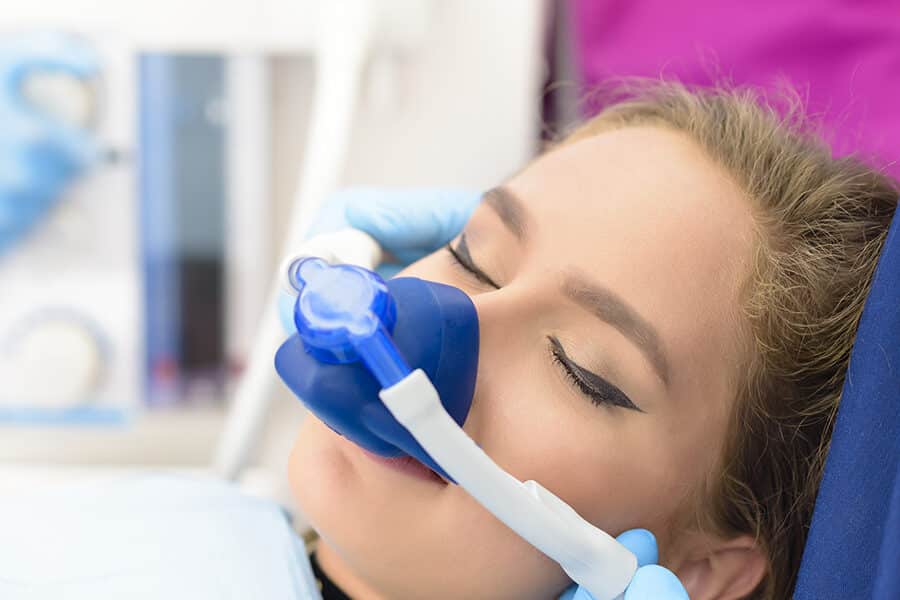Nitrous oxide is used in many dental practices to help alleviate pain and anxiety during dental treatments. Commonly referred to as “laughing gas”, this chemical compound is a familiar way that many patients undergo a variety of dental procedures.
How does it work?
The effects on the body can be achieved throughout the various levels of sedation. Depending on the amount of nitrous oxide a patient receives, they may experience different reactions in response to the sedation. Generally, patients describe feeling light-headed, tingly in their arms and legs, warm, euphoric, and sleepy. Some also experience a floating or vibrating sensation.
What are potential short-term side effects?
Even though side effects can occur from inhaling nitrous oxide, many who receive the gas don’t have adverse reactions or complications at all.
Common short-term side effects include:
- Excessive sweating
- Shivering
- Nausea
- Vomiting
- Dizziness
- Fatigue
Oxygen is sometimes administered along with nitrous oxide. If not, you may receive oxygen for about five minutes after your doctor turns off the gas. Oxygen helps clear any remaining gas from your body. This will help you regain alertness after your procedure. Getting sufficient oxygen may also prevent a headache, which is another possible side effect of laughing gas.
Talk to your dentist. If you have any questions about nitrous oxide, ask them. They’re happy to explain how it works and why it may be a good fit for your next dental procedure.
